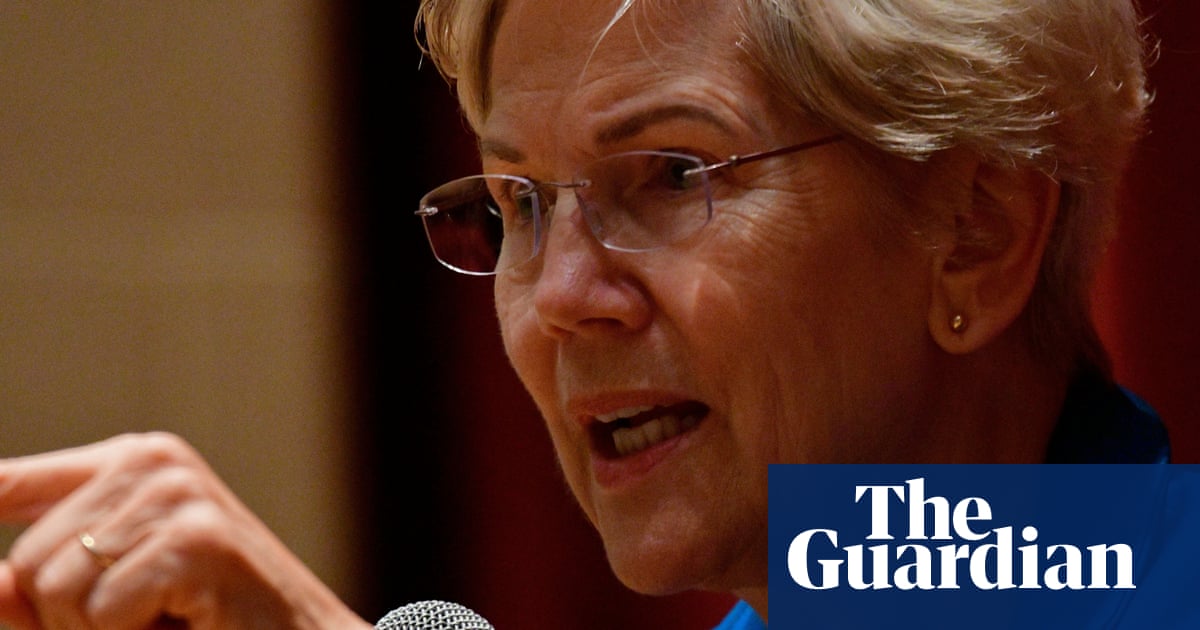Democratic lawmakers accuse companies of shrinking product sizes while charging consumers the same price
It’s becoming a common experience for Americans going to the grocery store: your bag of chips seems lighter, your favorite drink comes in a slimmer bottle, and you’re running out of laundry detergent more quickly than usual. And yet things are staying the same price.
On Monday two Democratic lawmakers launched an attempt to get to the bottom of the phenomena, accusing three major companies, Coca-Cola, PepsiCo and General Mills, of shrinking the size of products while charging consumers the same price – a price-gouging practice known as “shrinkflation”.
…
“Shrinking the size of a product in order to gouge consumers on the price per ounce is not innovation, it’s exploitation,” Warren and Dean said in a statement. “Unfortunately, this price gouging is a widespread problem, with corporate profits driving over half of inflation.”
The federal government should just enact a national unit price mandate for fair comparison shopping.
Currently, eighteen (18) states and one (1) territories have unit pricing laws or regulations in force. Ten (10) of these have mandatory unit pricing provisions. They are: Connecticut, Maryland, Massachusetts, New Hampshire, New Jersey, New York, Oregon, Rhode Island, Vermont and the District of Columbia.
https://www.nist.gov/pml/owm/national-legal-metrology/us-retail-pricing-laws-and-regulations
This is the right way to go about it. Telling companies they can’t do x or y doesn’t jive with capitalism if they aren’t deemed monopolies.
Unregulated capitalism is clearly a shitshow so why are you arguing against an entire class of regulations for no real reason other than historical precedence? There’s no such thing as an inherent rule. They’re all just as made up as the rest.
That’s a straw man argument and adds nothing to this conversation.
He says, while adding nothing to the conversation.
Can I also add nothing? It’ll make me feel important with no consequences.
I got enough out of this that I feel you should try again, but try harder not to try so hard.
Ok, but how do you see the proposed legislation playing out? How do you expect congress to set a specific amount of product that can no longer be reduced? It’s not like anyone can trust congress to revisit the law when changes are needed. Companies will just start making “six packs” of individual things that used to be sold as a six units per container in order to maintain flexibility to shift quantities in the future. This will lead to way more packaging.
Regulating capitalism is a very good thing, but I don’t see how it makes any sense in this case with the proposed legislation.
No one has proposed any specific legislation. We’re talking about theoretical concepts. My only point is that saying “that’s not how capitalism works” is a dumb thing to say when it comes to rejecting an idea because we are collectively making up the rules for how capitalism works as we go along. It can work in whatever way we want it to.
Unit pricing helps. A French supermarket also puts shrinkflation warning stickers on shelves where packaging size changed but price has not, that too should be mandatory
for how long do the stickers stay up?
IIRC Hungary made it mandatory a while ago.
Great, now I can more accurately compare how all the brands are shrinking at roughly the same rate. The problem isn’t consumer education, it’s implicit market collusion. Coke shrinks and doesn’t lose profit so Pepsi shrinks so Coke shrinks so Pepsi shrinks, etc - a race to the bottom feedback loop.
Unit pricing is good, but I don’t really think it solves this particular issue. Every time I see unit price even listed it’s in tiny, near illegible font under the massive bold item price, and every time I’ve point d the out to people they don’t give a shit because they aren’t going to spend 5 minutes comparing the prices of soda bottles so they can squeeze out less than a dime’s worth of savings.
The problem isn’t consumer education, it’s implicit market collusion.
Nailed it. And this is why your comment about notifying customers is also correct. Consumers barely have a choice. Everything is overpriced.
they aren’t going to spend 5 minutes comparing the prices of soda bottles so they can squeeze out less than a dime’s worth of savings.
It’s all about those percentages. My favorite chips went from 60¢/oz to 85¢/oz. Clearly not worth my time in terms of absolute price difference, but that’s a 41.67% increase. If I just ignore the amount through my whole grocery trip, the difference at the checkout line is huge. It becomes worth my time very quickly.
You can explain that to people but it still won’t convince them to spend any amount of time doing math in a grocery store unless they’re so desperate for cash that the problem is well beyond the scope of pricing schemes.
I frequently make decisions based on ($/oz, $/g, or $/ml) unit pricing, but I also have very limited income.
It’s awful, but it has been going on for decades.
So why not do something about it?
Something should be done about it, and as I mentioned elsewhere, the French supermarket chain putting stickers on shelves to warn consumers is one thing that can be done, as is mandatory unit prices (common where I live). And those things would be newsworthy. An ‘attempt to get to the bottom of it’ is just hot air
Coke, Pepsi, and General Mills must have missed their payments.
Warren isn’t bought by them.
Posturing without any follow-through is how politics generally works
I’m sure they’ll stop this practice post haste.
On the one hand, shrinkflation is a fucking awful thing to do to consumers.
On the other hand, I wish people would see the fact that they’re eating fewer chips and drinking less sugary soda has a silver lining.
Maybe keep the physical shrink and shrink the price too?
Right, I mean the issue isn’t necessarily the smaller serving size, it’s the much higher price per quantity of product. That said it isn’t all upside since the volume of a container increases faster than its surface area and therefore larger packages use less packaging material per quantity of product leading to less trash (assuming the product is fully consumed and not partially thrown away).
There’s a balancing act in play where the ideal size is the average amount that a person would consume within the products shelf life (once opened). That minimizes food waste and excess packaging material.
Since averages when applied to people are notoriously bad (see E.G. attempts at making an average fighter pilot seat) it’s best to offer a variety of package sizes so that consumers can purchase the one that best meets their consumption needs. So as to not encourage over consumption though, the cost of packaging materials should probably be averaged and applied to the quantity of product such that price per quantity of product remains linear instead of being cheaper as the volume of the container increases.
Standardizing ‘serving size’ would help too.
The ‘serving size’ of an 7.5-ounce can of Coke is… one can.
The ‘serving size’ of a 12-ounce can of Coke is… one can.
The ‘serving size’ of a 16-ounce bottle of Coke is… one bottle
The ‘serving size’ of a 20-ounce bottle of Coke is… one bottle.
The ‘serving size’ of a 2 liter bottle of Coke is… about six.
No wonder everyone ignores that phrase.
Those serving sizes actually make sense though. The ones that don’t are for instance a small bag of chips with a serving size like 1.5 servings where it’s very obvious the serving size was picked not based on the expected consumption (I’m certain the expectation is that the entire bag will be eaten in one sitting), but in order to make the nutritional information seem more reasonable. Or a single candybar with a serving size of 2.5.
There needs to be a distinction between single serving packaging vs. multi-serving packaging (which should be resealable), and that should be based on actual consumption not attempts to massage the nutritional into.
I don’t feel like it does make sense for all of those different sizes except the largest being one serving. Especially when the largest is more than twice as big as the smallest.
It goes back to my earlier point about average person. A 12oz can might be a single serving to you, but only a half serving to someone else. By offering different sized bottles/cans the consumer can purchase the single serving size appropriate to them (with matching accurate nutritional info). What shouldn’t happen though is for instance a 16oz bottle using the nutritional info from a 12oz bottle and just adjusting the servings per container to be ~1.3.
“Serving sizes” have always been arbitrary numbers set by the manufacturer, and yes they’re often ridiculous because they try to cheat the math. But I think they did make them start adding “per package” nutrition facts for non-resealable containers to combat this.
That’s not silver lining. That’s a flake of silver from the CEO’s toilet paper after he wiped his ass and threw it in the mixer
Yes, proportional change would be better although when it ccomes to cereal it is the person pouring the cereal that decides how much a serving is.
Absolutely. With some things, the physical shrinkage is not going to change portion size. But chips and soda were specifically mentioned.
mmmmmm cereal…
What we need is regulation on serving sizes. Restaurants offer giant soda sizes because the cost of the actual product was almost nothing in comparison to the infrastructure required to serve it. Selling a $2 soda is roughly the same profit at 8 oz or 32 oz. So why not offer the 32 oz for 15 cents more and make the customer feel better about the value for their money? Plus, it’s addictive and reinforces taste hunger which encourages binge eating and triggers a physiological response to the meal.
Unfettered capitalism would scoop out your insides and sell them back to you if it generated profit. Sugar, salt, acid, and fat should be tightly regulated additives.
That’s really funny, I just finished posting almost the same thing about serving sizes to someone else in this comment chain but put it in another way. I agree with you 100%.
The problem is lack of consent.
If I’m buying less chips than the last time, I should be informed, not in fine print, but in obvious terms.
A few companies tried to pawn off their shrinkflation by going the health route. A journalist then asked, “Why, then, are you not advertising the health benefits of this new size?”
I wish I could find the interview because the spokesperson simply gaffed and showed that it was not about health. It was about money.
Oh it’s definitely not about health. I’m just saying that they should be smaller portions. Just not what they charge for them.
They will just have to raise prices. It won’t actually benefit consumers
You’re right about raising prices, but it will benefit consumers. If you’re making a recipe, you won’t have to buy 2 things instead of one and then figure out what you’re gonna do with a weird fraction of some ingredient.
It’ll be less wasteful in terms of packaging too. That’s better for the environment.
It will also make it easier to notice for the average consumer, which could change shopping habits and ultimately lead to a lower stable price.
They are already raising prices too, you pay more for less.
You won’t get it cheaper, that’s not how it works.
Shrink flation is a form of price gouging because it’s deceptive.
Before inflation hit I bought the same brand of chips for over a year. The company both raised the prices and reduce the size of the container.
Effectively raising the price on me twice while hiding half of the price increase.
Once I saw that they had reduced the size of the bag of chips by 20%, and had tried to price gouge me, I switched to a different brand of chips.
Some inflation is going to happen naturally and I accept that. But this was not natural inflation where corporations had to raise the prices. It was greed.
The initial price increase was enough to cover inflation. The rest went to shareholders. If the price increase had been fair, they wouldn’t have hid it behind shrinkflation.
Price gouging is a pejorative term used to refer to the practice of increasing the prices of goods, services, or commodities to a level much higher than is considered reasonable or fair by some.
Nothing to do with deceptive packaging.
It was greed
They can just raise the prices more
The rest went to shareholders
The rest always goes to shareholders. You imagine inflation going like this:
Price is $4, so it’s sold for $5. When the price goes to $6, it’s sold for $7
Inflation actually goes like this:
When the price is $6, it’s sold for $7.50 because shareholders don’t like lower margins
All their “deals” are like 10.5oz canned sodies for $10/12pk or 3 pks for $20. They sell sugar and water and carbonation and they price it like expensive spring water. It’s poison.
Costco muffins just got smaller. I saw people freeze with confusion
Here I’m starting to see “family sized” chocolate bars that are way more expensive but it weights the same grams as the old size before shrinkflation.
“family sized” here may refer to not how much a family can/should consume of the chocolate, but all they can afford. /s
Fuckingcapitalists
On the one hand, I’m in favour of portion sizes getting smaller for junk foods.
On the other hand, I’d prefer to be getting the same amount of stuff each time I buy the same product. I’d rather prices go up instead of things getting stealthily smaller.
The worst is when they use the same packaging, but just have less product. Kraft Dinner/instant Mac & Cheese being a particularly egregious offender…
Seems like there should be some way to tax packaging to combat that crap.
deleted by creator
Bring back the 3L bottles!
I’m fine with Coke and Pepsi keeping their shrinkflation.
I was looking to find what this actually does about shrinkflation and couldn’t find it.
If this is some fact-finding committee i swear I’ll lose my mind. The shrinkflation’s not even subtle, and its much much more than the paltry examples listed.
Like it’s so insulting i stopped me bad habit of eating kids cereal as a treat/dessert. The fact there’s no value prospect anymore is one thing, sure but the size of these goddamn cereal boxes got so small so fast even my lizard brain (the one ad guys work so hard to manipulate) gets angry instead of tempted.
I leave the grocery store imagining it’s on fire every week and I bet I’m not the only one
It’s less than a committee. They sent a letter and released a statement.
But maybe the FTC will be doing something too.
I recently noticed that the 52oz “half gallon” bottles of orange juice were cheaper per unit than the 89oz “gallon bottles”. I couldn’t figure out how that could be the case.
Well, now they’ve taken away the 52oz bottles and replaced them with even smaller 46oz bottles. And they’re once again more expensive per unit than the big ones. (And the little single-serving bottles are 11oz, probably going down to 10.5 soon.)











